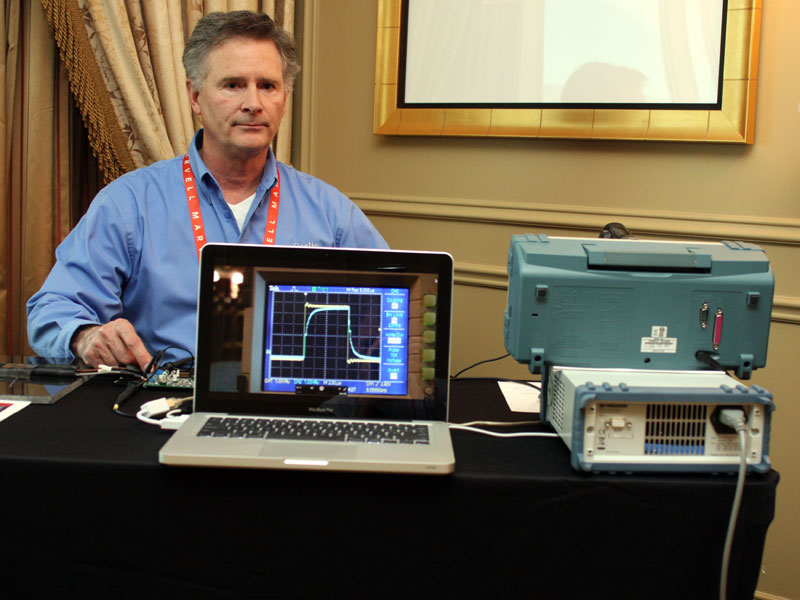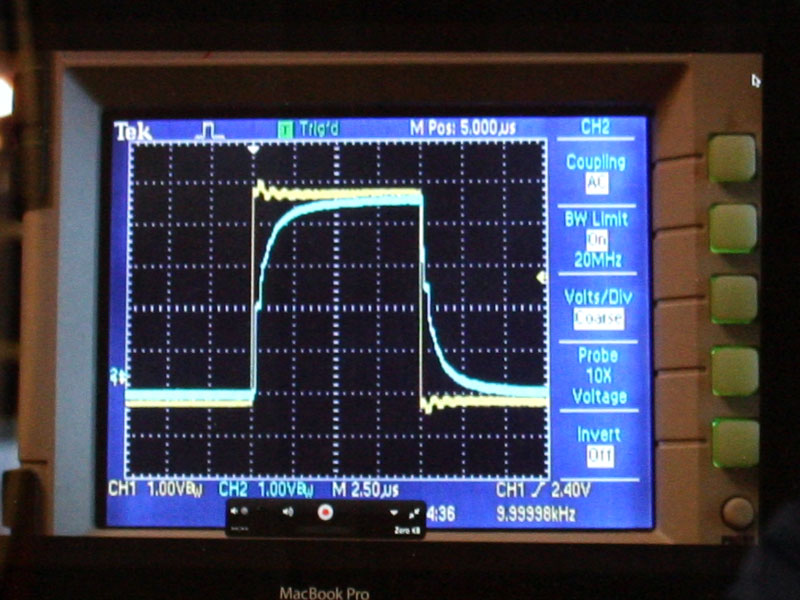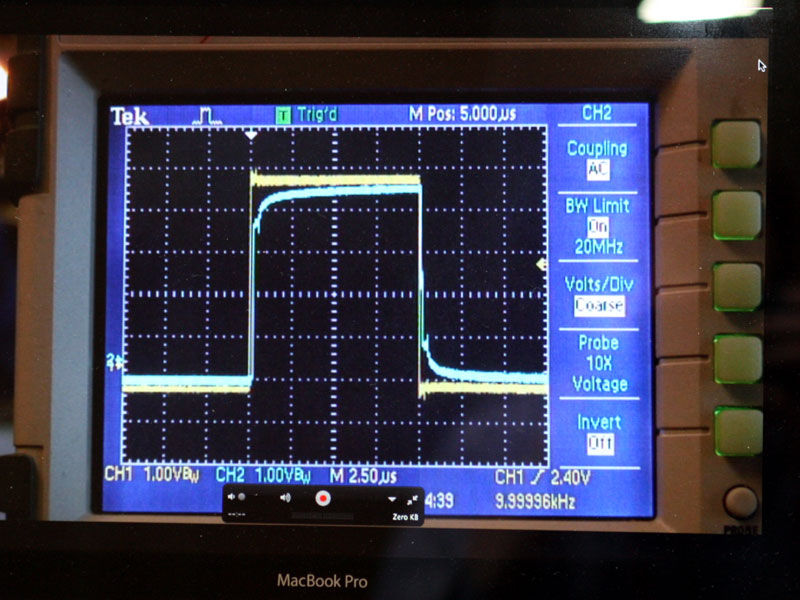CES & THE Show 2012 • TABlog
Walk the hallways of the Venetian, home of the CES's audio exhibits, and you hear music coming from most rooms, and those it doesn't waft out of are either changing recordings or hosting a static exhibit, the equipment on silent display. Shunyata Research's "static exhibit" was anything but silent. The company that pioneered the use of measurements for power cords devised a demo that addressed both subjective and objective evaluation as they relate to signal-carrying cables. For the subjective, a guitarist played a short number
twice while plugged into a standard PA system. The first time through the number he used a
Mogami instrument cable -- one that musicians the world over use. For the second playing,
he used an identical length of Shunyata Research's Cobra interconnect -- the lowest-price
cable in the company's new
If that demonstration wasn't convincing, for reasons of bias or simply the inability to hear the differences, then what followed was far more difficult to question. Using, as he stated, "conventional technology" that included a digital oscilloscope, Caelin Gabriel, the head of Shunyata Research, ran a 10kHz signal through his Cobra speaker cables with and without his Zitron circuit inline -- he was easily able to insert or remove it. With a camera fixed on the 'scope's screen, the output fed to a laptop so it was easy to see, he inserted and removed the circuit.
The effect of the circuit is shown in difference between the two pictures that I took while watching the demo. Without the circuit is shown above, and with it is below. The difference in the shape of the square wave was obvious. Interestingly, at one point the 'scope showed some intermittent RFI that the cable was picking up at that moment, distorting the square wave even more. Seeing this on the 'scope, Caelin quickly inserted the Zitron circuit, and it took care of that as well.
What was the point of these demonstrations?
"We're really trying to take all this [audio cables in general] out of the realm of
spook science," Gabriel said. Whether you believe your ears or measurements, these
tests had something for you to consider. |




